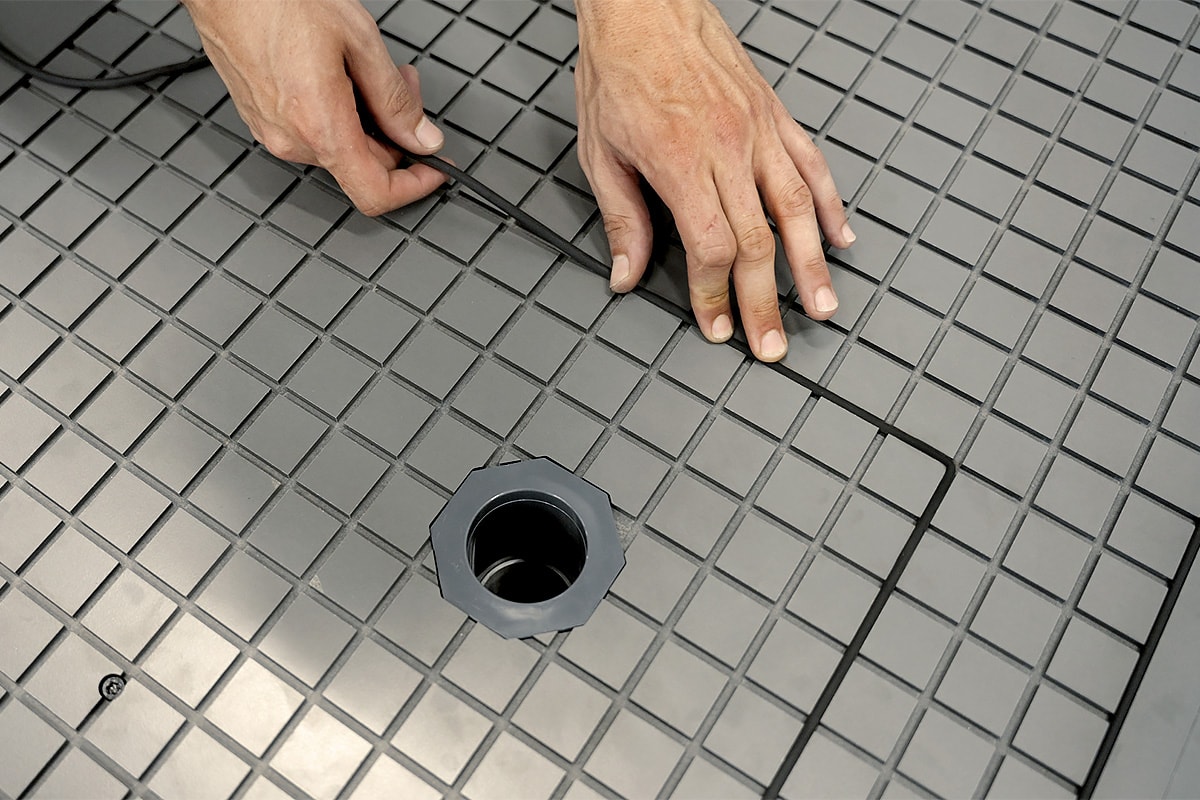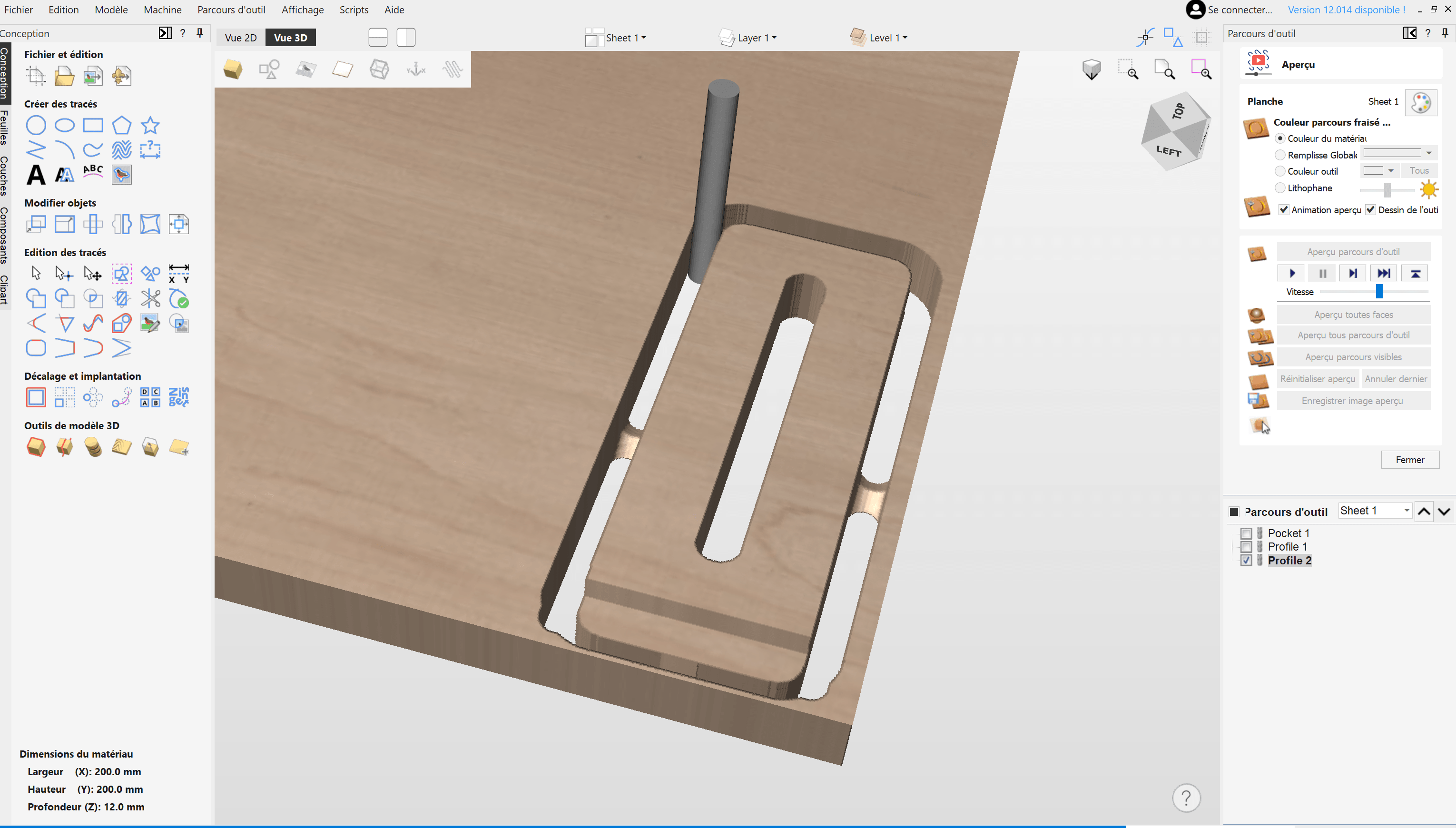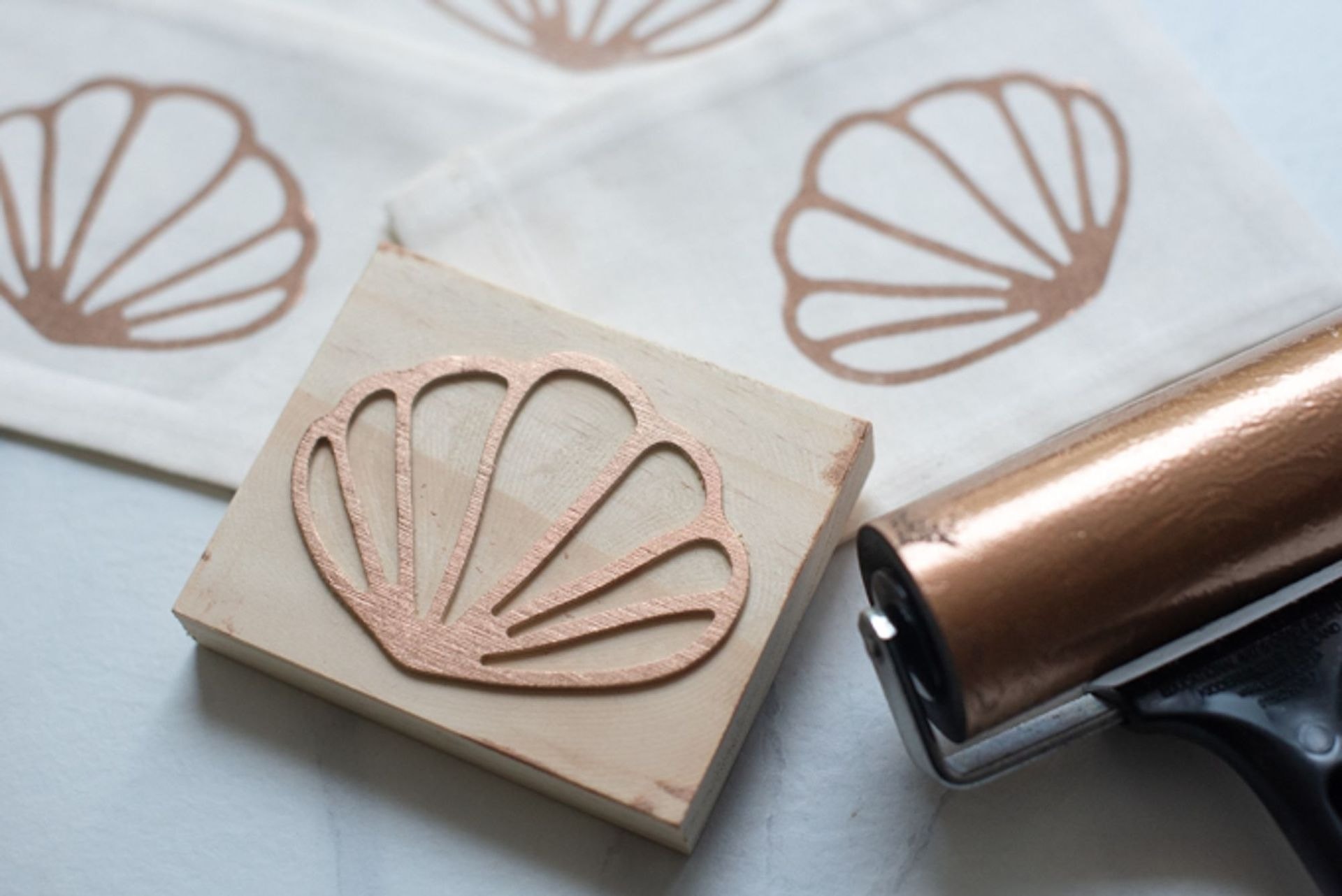Der Einstieg in die Nutzung eines Vakuumtisches an deiner CNC-Fräse kann überwältigend erscheinen. Es gibt viel zu lernen, und der Unterschied zwischen einer richtig optimierten Einstellung und einer schlecht konfigurierten kann den Unterschied zwischen sicherem Werkstückhalten und Teilen, die während der Bearbeitung wegfliegen, ausmachen.
Dieser Leitfaden führt dich durch alles, was du wissen musst, beginnend mit den wichtigsten Konzepten für Sicherheit und Schnittqualität, bevor wir zu fortgeschrittenen Optimierungstechniken für diejenigen übergehen, die das Maximum aus ihrem System herausholen wollen.
Hinweis: Dieser Leitfaden richtet sich speziell an Benutzer mit einem Vakuumsystem, das ein MDF-Spoilerboard und eine Hochluftdurchsatz-Pumpe (Seitenkanalgebläse oder BlackBox-Vakuumpumpen) umfasst. Diese Systeme sind unverzichtbar bei der Arbeit mit einem Spoilerboard, da die Porosität des MDF Luft durchlässt — etwas, was eine herkömmliche Vakuumpumpe (die Druck über Durchfluss priorisiert) nicht effektiv kompensieren kann. Hochluftdurchsatz-Systeme hingegen gewährleisten ausreichende Saugkraft durch kontinuierliche Bewegung großer Luftmengen, was sie ideal für CNC-Fräsen macht, die mit größeren Werkstücken oder Zonensystemen arbeiten.
Die Grundlagen: Oberfläche und Teilegröße
Zur Erinnerung: Vakuumspannung basiert auf dem atmosphärischen Druck, der auf dein Werkstück nach unten drückt. Deine Vakuumpumpe entfernt Luft unter dem Teil und erzeugt einen Druckunterschied. Je größer die Kontaktfläche und je besser die Abdichtung, desto stärker ist der Halt.

Die goldene Regel: Jedes Teil kleiner als 500 cm² (z.B. ein 22×22 cm Quadrat oder ein 5-Zoll-Durchmesser-Kreis) wird mit Vakuum allein nicht zuverlässig halten.
Das ist kein Vorschlag, sondern eine Sicherheitsanforderung. Kleine Teile haben einfach nicht genug Kontaktfläche, damit der atmosphärische Druck ausreichende Haltekraft erzeugt. Für diese Teile musst du verwenden:
- Stege (Tabs): Lass kleine Verbindungen zwischen dem Teil und dem Rohmaterial
- "Onion Skinning": Lass 0,2-0,3 mm Material am Boden deines Schnitts und beende mit einem Messer
- Haftmatten: Spezialisierte Gummimatten, die Reibung und Abdichtung erhöhen
- Vorrichtungen oder Lehren: Maßgeschneiderte Halter für wiederholte kleine Teile
- Span- und/oder Staubstabilisierung: Das ist keine offizielle Technik, aber Späne und Staub, die mit einem Downcut-Fräser erzeugt werden, helfen dabei, deine kleinen Teile an Ort und Stelle zu halten, sobald sie vollständig geschnitten sind.

Dein Spoilerboard ist ein Verbrauchsmaterial
Dein Spoilerboard spielt eine kritische Rolle bei der Vakuumleistung und muss oft überprüft werden. Mit der Zeit reduzieren Rillen und Porosität die Wirksamkeit, aber andere Variablen spielen hier eine Rolle.
Ordnungsgemäße Vorbereitung
- Bearbeite beide Seiten: MDF hat eine Werksbeschichtung, die entfernt werden muss. Das Bearbeiten nur einer Seite begrenzt den Luftstrom erheblich
- Halte es flach und gleichmäßig: Ein ordnungsgemäß bearbeitetes Spoilerboard sollte minimale sichtbare Werkzeugspuren und Rillen aufweisen
Wartung ist kritisch
- Tiefe Werkzeugspuren erzeugen Luftlecks unter deinem Material
- Bearbeite neu, wenn du signifikante Rillen oder ungleichmäßige Bereiche siehst
- In feuchten Umgebungen bearbeite häufiger neu, da Feuchtigkeit sowohl Porosität als auch Ebenheit beeinflusst

Materialauswahl
- MDF (Medium Density Fiberboard) ist die Standardwahl aufgrund seiner konstanten Porosität
- LDF (Low Density Fiberboard) kann funktionieren, wenn du zusätzliche Saugkraft willst, bringt aber zusätzliche feuchtigkeitsbedingte Herausforderungen mit sich
Lecks kontrollieren: Zonierung und Maskierung
Luftlecks sind der Feind der Vakuumspannung. Hier solltest du dich konzentrieren:
- Nutze das Zonensystem an deinem Tisch, um nicht verwendete Bereiche zu schließen.
- Bedecke ungenutzte Bereiche aktiver Zonen. Selbst MDF-Abfälle sind besser als offene Bereiche zu lassen. Dieser einfache Schritt kann die Haltekraft an deinem eigentlichen Werkstück dramatisch verbessern.
- Sorge für eine gute Abdichtung um die Ränder deines Spoilerboards, mit einer ordnungsgemäß platzierten Gummidichtung im Plenum. Einige Benutzer wenden auch Holzversiegelung an, um Spoilerboard-Ränder zu versiegeln und seitliche Luftinfiltration zu verhindern.

Die richtige Schneidstrategie wählen
Dein Werkzeug und deine Bearbeitungsstrategie beeinflussen direkt den Erfolg der Werkstückspannung:
Werkzeugauswahl
- Aufwärts-Schneidefräser ziehen Späne nach oben und außen, können aber Teile anheben, mit Vorsicht bei kleinen oder dünnen Teilen verwenden.
- Abwärts-Schneidefräser drücken das Werkstück nach unten auf den Tisch und verbessern den Halt bei schwierigen Operationen.
- Kompressionsfräser kombinieren beide Aktionen und funktionieren gut für viele Vakuumanwendungen.
- Verwende scharfe, saubere Fräser, die weniger Schnittkraft erzeugen und dadurch das Risiko von Teilbewegungen reduzieren.
Schnittparameter
- Mehrere flache Durchgänge sind sicherer als einzelne tiefe Schnitte
- Erwäge Gleichlauffräsen für bessere Spanabfuhr und reduzierte Abhebungskräfte.
- Überprüfe immer die vom Hersteller deiner Fräser empfohlene Vorschub- und Drehzahl.
Die Bedeutung der Materialien
Nicht alle Materialien verhalten sich gleich:
- Glatte, nicht-poröse Materialien (z.B. Acryl) haben den besten Halt.
- Raue oder verformte Materialien reduzieren den Kontakt und brechen die Abdichtung.
- Feuchtigkeit kann Holz beeinträchtigen und MDF sättigen, wodurch der Luftstrom reduziert wird.
Tipp: Verwende wenn möglich abgerichtete oder gehobelte Materialien, besonders bei Harthölzern.

Überwache deinen Staubschuh und dessen Absaugung
Ein häufiger Fehler: vergessen, dass der Staubschuh seitliche Kraft ausübt, besonders bei kleinen Teilen. Das kann Verschiebungen verursachen, auch wenn der Vakuumhalt gut ist.
- Überwache, ob der Staubschuh bei Endbearbeitungsdurchgängen an kleinen Teilen "hängen bleibt".
- Vergiss nicht, dass die Staubabsaugung eine entgegengesetzte Kraft auf das gespannte Werkstück ausübt.
Umgebungsüberlegungen
Die Umgebung deiner Werkstatt beeinflusst die Vakuumleistung erheblich:
- Höhe ist wichtig: In großer Höhe ist der atmosphärische Druck niedriger, was die maximale Haltekraft reduziert. Auf 2000m hast du etwa 20% weniger Haltekraft als auf Meereshöhe.
- Hohe Luftfeuchtigkeit verstopft MDF-Poren, reduziert den Luftstrom und Feuchtigkeit kann Verzug der Spoilerboard-Platten verursachen.
- Umgebungstemperaturen über 35°C reduzieren die Motorlebensdauer erheblich und können die Vakuumpumpenleistung beeinträchtigen.
Verstehen deiner Vakuumpumpe
Dieser Abschnitt ist spezifisch für Black Box Vakuumpumpen (Hurricane oder Storm).

Der erste wichtige Punkt ist, dass diese Hochluftdurchsatz-Vakuumpumpen Bürstenmotoren verwenden, die Verbrauchsteile sind (vergleiche sie mit den Bremsbelägen deines Autos). Das Verstehen ihrer Funktionsweise und ihres Verschleißes hilft dir, ihre Lebensdauer zu maximieren und unerwartete Ausfallzeiten zu vermeiden.
Motorlebensdauer
- Durchschnittliche Lebensdauer: 800-1.000 Stunden
- Bereich: 600-1.200 Stunden je nach Umgebung, Luftstrom und Nutzungsmustern
- Wichtiger Punkt: Aggressive Nutzung (lange Laufzeiten mit begrenztem Luftstrom) beschleunigt den Verschleiß, während intermittierende Nutzung mit angemessener Kühlung die Lebensdauer verlängert.
Primär- vs. Sekundärmotoren [nur Hurricane]
Das Hurricane-System verfügt über zwei separate Motorstufen, die jeweils von ihrem eigenen Netzschalter gesteuert werden, was dir ermöglicht, sie unabhängig oder zusammen zu aktivieren. Durch das Design erhöht die Sekundärstufe den Luftstrom, nicht das Vakuum, dieser zusätzliche Strom kompensiert die erhöhte Luftleckage beim Schneiden durch Material.

Wichtiger Hinweis: Das System ist für den Betrieb in nur eine Richtung ausgelegt, daher kannst du es nicht nur mit den Sekundärmotoren betreiben. Wenn die Primärmotoren ausgeschaltet sind, leckt Luft durch sie hindurch, was einen Verlust der Vakuumspannung im gesamten System verursacht.
Das Verstehen, wann beide Stufen zu verwenden sind, hilft bei der Optimierung von Leistung und Motorlebensdauer.
Nur Primärmotoren sind ausreichend für:
- Flache, nicht-poröse Materialien (glattes Acryl, feste Kunststoffe)
- Große Teile mit minimaler Durchschneidung
- Teilweise Tischnutzung mit geschlossenen Zonen
Primär- + Sekundärmotoren werden empfohlen für:
- Poröse Materialien (Sperrholz, MDF)
- Kleine oder verschachtelte Teile
- Hochwertige Arbeiten, bei denen maximaler Halt kritisch ist
- Vollständige Tischoberflächennutzung
Kritische Wartung für lange Pumpenlebensdauer
Das "Deadheading"-Problem
Eine der schnellsten Arten, deine Vakuummotoren zu zerstören, ist "Deadheading", das bedeutet, das System mit minimalem Luftstrom zu betreiben. Wenn Motoren keine Luft bewegen können, überhitzen sie schnell. Das passiert in folgenden Fällen:
- Arbeiten mit nicht-porösen Materialien mit wenigen Durchschnitten
- Laufen langer 3D-Gravurdateien
- Die Pumpe während längerer Einrichtungsperioden mit blockierten Zonen laufen lassen
Wie wir früher in diesem Leitfaden erwähnt haben, ist es wichtig, Lecks zu minimieren, um die Haltekraft zu maximieren, besonders für kleine oder empfindliche Teile. Wenn deine Arbeit es jedoch erlaubt (d.h. wenn dein Material groß genug und gut gestützt ist), kann es vorteilhaft sein, eine kontrollierte Menge Luftstrom zu belassen, indem du einen kleinen Bereich freilegst oder eine Zone leicht öffnest. Das hilft den Motoren, kühl zu bleiben, verlängert ihre Lebensdauer und behält ausreichende Saugkraft für sicheres Spannen bei.
Wesentlicher Wartungsplan
Dieser Plan wird empfohlen, wenn du deine Vakuumpumpe täglich verwendest. Wenn du sie seltener nutzt, kannst du die Wartung strecken.
Wöchentlich:
- Den blauen Filter reinigen (kritisch für Luftstrom)
- Den Kartuschenfilter leeren
Monatlich:
- Tiefenreinigung aller Filter (blau und Kartusche)
- Spoilerboard bei Bedarf neu bearbeiten, um Luftdurchlässigkeit zu erhalten
- Überprüfen, dass die Vakuummesswerte innerhalb der Spezifikationen liegen
Jährlich:
- Filter ersetzen, wenn sie kein Licht mehr durchlassen
- Motorbürsten und Lager inspizieren
Kühlzyklen sind obligatorisch
Nach jeweils 60-90 Minuten kontinuierlichem Betrieb erlaube eine Abkühlperiode von 15-20 Minuten. Diese einfache Praxis kann die Motorlebensdauer um 30-50% verlängern.
Einfacher Zugang fördert die Wartung
Organisiere den Bereich, wo du deine Maschine und Vakuumpumpe installierst, so dass du einfach auf die Filter zugreifen kannst (den blauen Schaumfilter und den Kartuschenfilter).
Fehlerbehebung und Notbetrieb
Die Zeichen des Motorverschleißes lesen
Bevor sie komplett ausfallen, geben Motoren oft Warnzeichen:
- Ozongeruch: Zeigt übermäßige Funkenbildung von abgenutzten Bürsten an
- Längere Funkenspuren: Sichtbar durch Inspektionsöffnungen, wenn Bürsten sich dem Ende ihrer Nutzungsdauer nähern
- Ungewöhnliche Geräusche: Klopf-, Klapper- oder Schleifgeräusche
- Saugkraftverlust: Allmähliche Abnahme der Haltekraft
Notbetrieb mit ausgefallenen Motoren
Wenn ein Motor mitten im Projekt ausfällt, kannst du oft weiterarbeiten:
- Das System kann nur mit Primärmotoren laufen (die dem Auslassport am nächsten sind)
- Wenn ein Primärmotor ausfällt, kannst du einen funktionierenden Sekundärmotor auf die Primärposition tauschen
- Niemals nur Sekundäre laufen lassen: Das System ist einseitig, und Luft wird durch inaktive Primärmotoren lecken
- Schnelle Fehlerbehebungs-Checkliste
Wenn du schlechten Vakuumhalt deiner Teile erlebst, überprüfe diese wesentlichen Punkte:
- Wurde das Spoilerboard kürzlich bearbeitet? Tiefe Rillen erzeugen Luftlecks.
- Sind alle ungenutzten Vakuumzonen geschlossen? Offene Zonen reduzieren die Systemleistung drastisch.
- Gibt es große Spalten oder Lecks unter dem Material? Sogar kleine Spalten brechen die Abdichtung.
- Ist das Material flach und macht guten Kontakt mit dem Opfertisch? Verzogene Materialien können keine ordnungsgemäße Abdichtung aufrechterhalten.
- Ist der Vakuumdruck im erwarteten Bereich? Überprüfe deine Messwerte gegen die Systemspezifikationen.
Leistungstest
Führe diesen "Deadhead-Test" durch, um die Systemgesundheit zu überprüfen:
- Nur mit Spoilerboard (kein Werkstück), alle Zonen offen: 100-130 mbar (3-4 inHg)
- Mit allen Ventilen geschlossen: 270-330 mbar (8-10 inHg)
Erreichst du diese Werte nicht? Du könntest ein Leck oder Pumpenproblem haben.
Optimierung für dein Produktionsniveau
Empfohlene Ersatzmotoren
Plane dein Ersatzlager basierend auf deiner Nutzung, um lange Ausfallzeiten zu vermeiden:
|
Werkstatttyp
|
Wöchentliche Nutzung
|
Empfohlene Ersatzteile
|
|
Hobby
|
<10 Stunden
|
1 Motor
|
|
Mittlere Produktion
|
10-20 Stunden
|
2 Motoren
|
|
Hohe Produktion
|
40-50 Stunden
|
4 Motoren
|
Hinweis: Motoren im selben System neigen dazu, sich mit ähnlichen Raten abzunutzen. Wenn einer ausfällt, folgen andere oft innerhalb von Wochen.
Beste Praktiken für maximale Lebensdauer:
- Vermeide Deadheading: Halte immer minimalen Luftstrom aufrecht
- Kontrolliere die Temperatur: Halte die Pumpenumgebung unter 35°C
- Sorge für Belüftung: Schließe Pumpen niemals in enge Räume ein
- Minimiere Leerlaufzeit: Schalte die Vakuumpumpe während langer Einrichtungen aus
- Halte Filter sauber: Verstopfte Filter zwingen Motoren, härter zu arbeiten
- Überwache Kontamination: Kunststoffstaub ist besonders problematisch, da er auf heißen Motoren schmilzt und den Verschleiß beschleunigt
Fazit
Ein Vakuumtisch ist unglaublich effektiv, wenn er richtig implementiert wird, erfordert aber Aufmerksamkeit für Details und regelmäßige Wartung. Beginne mit den Grundlagen: sorge dafür, dass Teile groß genug sind, warte dein Spoilerboard und dichte dein System ab. Mit zunehmender Erfahrung entwickelst du ein Gespür dafür, wann fortgeschrittene Techniken zu verwenden sind und wann du bei einfachen Lösungen bleiben solltest.
Denke daran: Im Zweifel wähle Vorsicht. Es ist immer besser, Stege (Tabs) hinzuzufügen oder alternative Spannmethoden zu verwenden, als ein Teil während der Bearbeitung sich lösen zu sehen.










